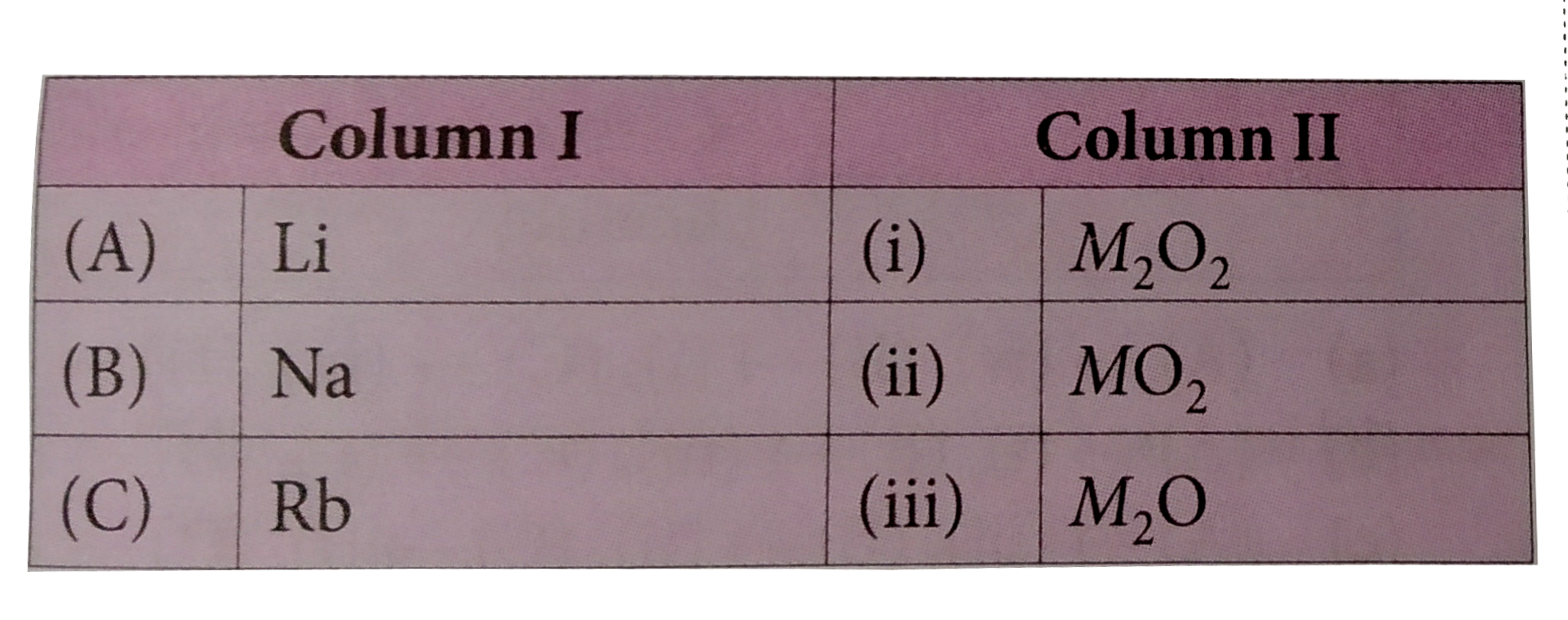Complete Solutions to Group 1 Elements - Alkali Elements of chapter THE S-BLOCK ELEMENTS of Class 11 book with complete answers and questions
| Class 11 | CHEMISTRY |
| Chapter | THE S-BLOCK ELEMENTS |
| NCERT FINGERTIPS | Group 1 Elements - Alkali Elements |
| Number Of Questions | 21 |
| Academic Year | 2023-24 |
Alkali metals are not found in free state due to their highly reactive nature. This is due to
View SolutionThe ionisation energy of alkali metals decreases from Li to Cs bacause
View SolutionFirst ionisation energy of alkali metals is very low but second ionisation energy is very high because
View SolutionThe solubility of alkli metals salts in water is due to the fact that the cations get hydrated by water molecules. The degree of hydration depends upon the size of the cation. If the trend of relative ionic radii is `Cs^(+) gt Rb^(+) gt K^(+) gt Na^(+) gt Li^(+) `.
What is the relative degree of hydration?
View SolutionThe mobilities of the alkali metal ions in aqueous solution are `Li^(+) lt Na^(+) lt K^(+) lt Rb^(+) lt Cs^(+) ` because
View SolutionArrange the following elements in the order of the increasing electropositive character.
Li, Na, K, Rb, Cs
View SolutionWhich is the characteristic flame colouration of Li?
View SolutionWhich of the following is not true about alkali metals?
View SolutionWhich of the following alkali metals when burnt in air forms a mixture of oxide as well as nitride?
View SolutionA metal M reaccts with nitrogen to give nitride which on reaction with water produces ammonia gas. Metal M can be
View SolutionAlkali metals cannot be extracted by reduction of their oxides and other compounds because
View SolutionWhen sodium reacts with excess of oxygen, oxidation number of oxygen changes from
View SolutionIn all oxides, peroxides and superoxides, the oxidation sate of alkali metals is
View SolutionMatch column I wht colun II and mark the appropriate choice.

View SolutionThe normal oxide contains______ion, peroxide contains_____ion and superoxide contains____ion.
View SolutionWhen sodium is added in scanty water, it catches fire. In this process which one of the following burns ?
View SolutionWhat happens when `H_(2)` is passed over lithium at 1073K?
View SolutionOn reaction with dihydrogen the alkali metals
View SolutionLithium is the strongest reducing agent though it has highest ionisation enegy in its group. Which of the followinng factors is responsible for making Li the strongest reducing agent?
View Solution`E^(@)` for `CL_(2)//Cl^(-)=+1.36,I_(2)//I^(-)=+0.53,Ag^(+)//Ag=+0.79,Na^(+)//Na=-2.71 and Li^(+)//Li=-3.04V`. What is the order of decreasing reducing sterngth for these species?
View SolutionThe alkali metals dissolve in ammonia to give a deep blue solution which is cnducting in nature.
`M+(x+y)NH_(3)to[M(NH_(3))_(x)]^(2+)+2[e(NH_(3))_(y)]^(-)` which of the followin is not true about the solutions of alkali metals in liquid ammonia?
View Solution
Group 1 Elements - Alkali Elements questions and complete solutions for chapter THE S-BLOCK ELEMENTS of MTG CHEMISTRY (HINGLISH) of Class 11
All Exercises from NCERT FINGERTIPS Class 11 CHEMISTRY THE S-BLOCK ELEMENTS
- Anomalous Behaviour Of Beryllium
- Anomalous Properties Of Lithium
- Assertion And Reason
- Biological Importance Of Magnesium And Calcium
- General Characteristic Of The Compounds Of The Alkali Metals
- General Characteristic Of The Compounds Of The Alkaline Earth Metals
- Group 1 Elements - Alkali Elements
- Group 2 Elements : Alkaline Earth Metals
- Higher Order Thinkin Skills
- Higher Order Thinking Skills
- MCQs
- NCERT Exemplar
- Some Important Compounds Of Calcium
- Some Important Compounds Of Sodium